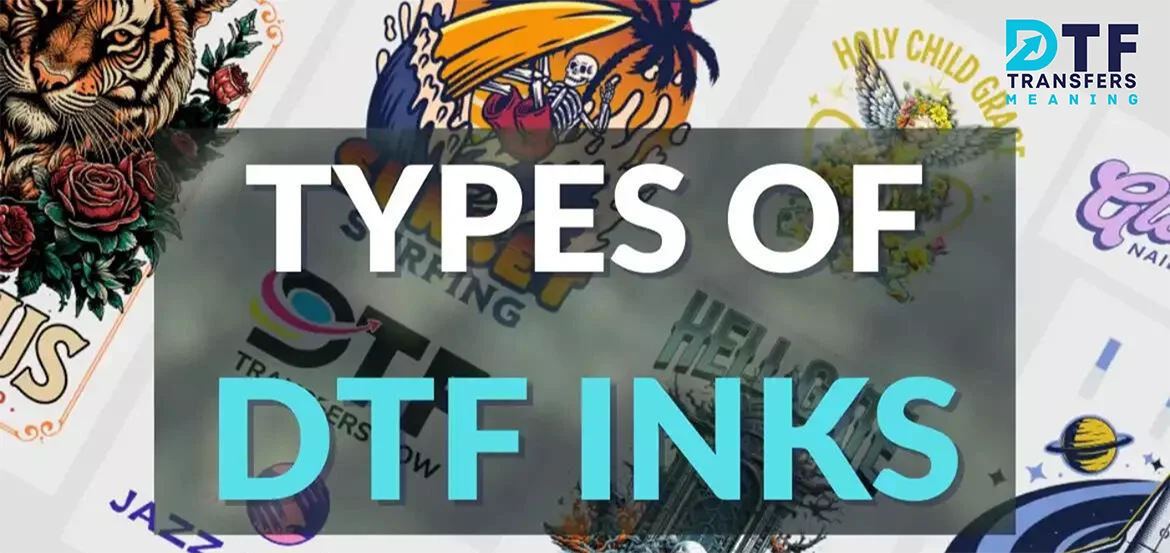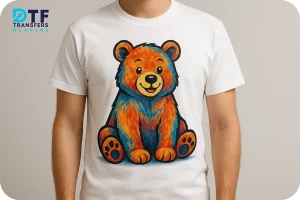Table of contents
Similar to the various printing methods available, such as DTF transfers and sublimation transfers, there are also a variety of inks utilized to produce a diverse range of designs on clothing, metal surfaces, wood, ceramics, etc.
Since 2019, DTF transfers or direct-to-film transfers have emerged as a popular solution for textile printing. This specialized technology can only use specific types of inks, but it offers easy application that saves time, reduces effort, and improves efficiency.
For small or start-up businesses, it is important to fully comprehend the components involved in the decision to rely on a DTF transfers provider or invest in a DTF device. To aid in this understanding, our team has crafted the following article to enlighten you on the attributes and advantages of various types of DTF inks.
Contrasts between standard inks and DTF inks
DTF inks serve the primary function of bringing designs to life by attaching its elements onto a film sheet that is sensitive to heat. Once the ink has dried and solidified, it can be transferred onto a wide variety of fabrics, allowing for the creation of unique merchandise including athleisure, personalized t-shirts, hats, and many other items.
Due to the nature of the DTF transfer process, it is not possible to utilize standard inks. These inks are specifically formulated for printing on paper and are not equipped to withstand extreme temperatures, exposure to water, stretching, cracking, or peeling. Additionally, there is a risk of these inks causing damage to the internal components of a DTF printer.
To ensure long-lasting and vibrant designs in a wide range of colors, it is essential to prioritize using the appropriate equipment. The production of DTF inks utilizes highly concentrated ingredients specifically designed to prevent fading due to elements such as movement, climate, and temperature.
Characteristics of DTF inks
The DTF inks have many advantages compared to standard inks, including higher resistance and durability. This printing technique allows for the creation of detailed and colorful designs using only a few primary colors, such as yellow, magenta, cyan, and basic black and white inks.
These inks are suitable for a wide range of fabrics such as cotton, polyester, blends, and others. Additionally, you can feel reassured about their impact on the environment, as most of their components are highly water-resistant and have exceptional adhesion properties while also being environmentally conscious.
Categories of inks utilized in DTF printing
The DTF inks have been specifically formulated to work seamlessly with DTF methods, enhancing the overall aesthetic and appeal of the transferred designs, resulting in a standout appearance. These direct to transfer inks have introduced fresh and inventive opportunities for the textile industry since 2019.
1. UV Inks for Direct to Fabric Printing
The promise of producing vibrant and precise designs is a common feature of all DTF inks, but the quality of the products provided by your supplier plays a significant role. What sets UV DTF inks apart is their rapid curing ability under ultraviolet light exposure.
This would result in a significant enhancement in production efficiency and workflow for UV DTF transfers, making it an ideal choice for businesses focusing on customizing promotional items such as mugs, wine glasses, signs, notebooks, and more! These specially formulated inks enable the creation and printing of personalized designs in a shorter timeframe, enabling you and your team to meet tight deadlines and satisfy high-demand needs more efficiently.
As a result, the capability to rapidly produce and print customized designs improves client contentment and brand awareness by providing timely orders while maintaining high standards.
2. Water-Based DTF Inks
These inks, as their name implies, are composed mainly of water-soluble elements. This makes them eco-friendly and more convenient to remove in comparison to alternative inks. Nonetheless, this also results in reduced water resistance and extended drying periods.
Due to their decreased water resistance, these materials may be more prone to cracking and peeling when exposed to moisture. Furthermore, the extended drying time of these materials may hinder efficient production processes, as it delays the readiness of printed materials or artwork for use.
3. DTF Inks Made with Dyes
For those in search of richly saturated inks, Dye-based Inks are a suitable option. Due to their composition, they have a strong ability to stick to various types of fabrics. However, this characteristic is only temporary as they share a similar lack of water resistance with water-based inks.
When it comes to expense, this particular ink is generally on the higher end. So, if you desire printing options that have a distinctive temporary impact or a design that may deteriorate over time, we suggest considering purchasing this ink. However, if you want a product that ensures the longevity of your logo and design, it is best to opt for UV inks.
4. DTF Inks that Utilize Solvent as a Base
One possible solution for achieving high-quality designs with intricate elements and precise lines is to utilize solvent-based DTF inks. These inks utilize solvents, such as oils and alcohol, as carriers for the pigments. This formulation facilitates rapid evaporation of the solvent post-printing, resulting in improved production efficiency.
To achieve optimal results, it is essential to adhere to the manufacturer’s guidelines for ink usage, printing, drying, and transfer processes, as this type of ink is highly specialized. Furthermore, proper maintenance and handling of equipment are critical to maintain consistent and high-quality printing.
Keep in mind that certain types of ink may be more compatible with particular DTF printer brands. To guarantee top-quality designs, we recommend consulting a DTF transfer expert who can recommend the most suitable ink for your desired design. For additional insights on this subject, visit our blog for further knowledge!





